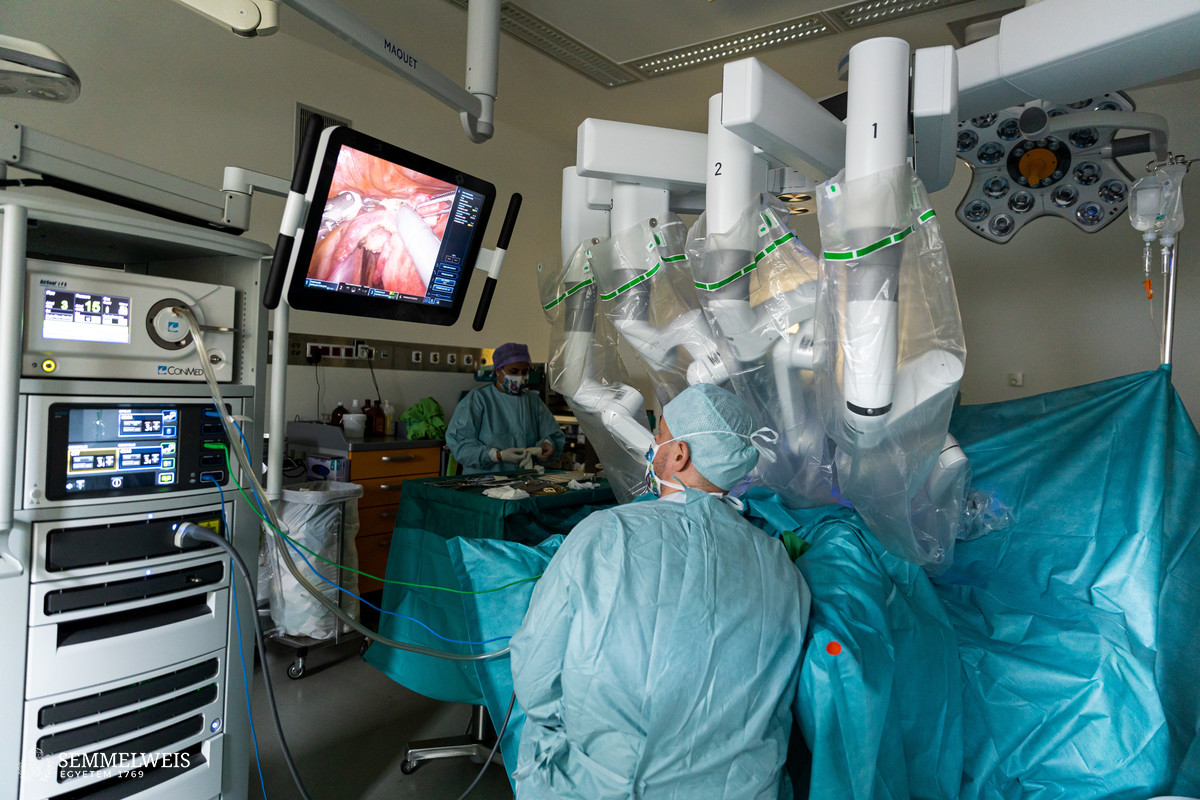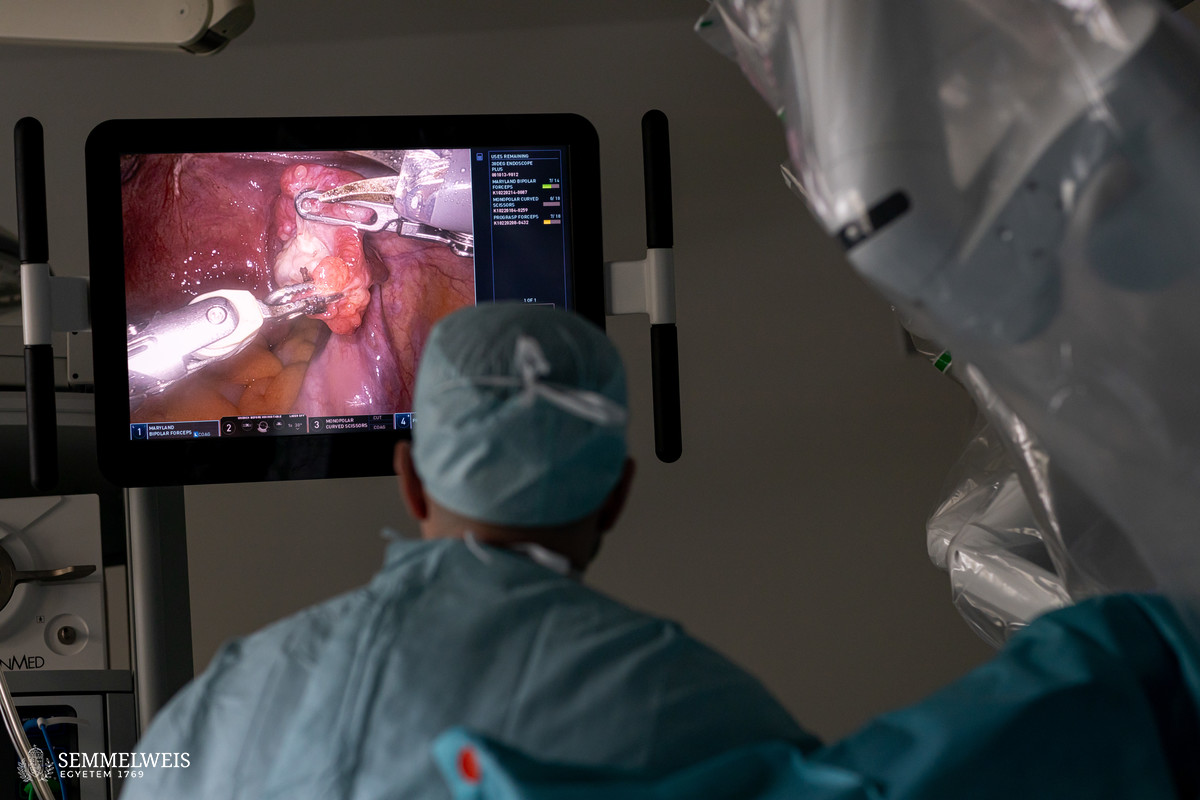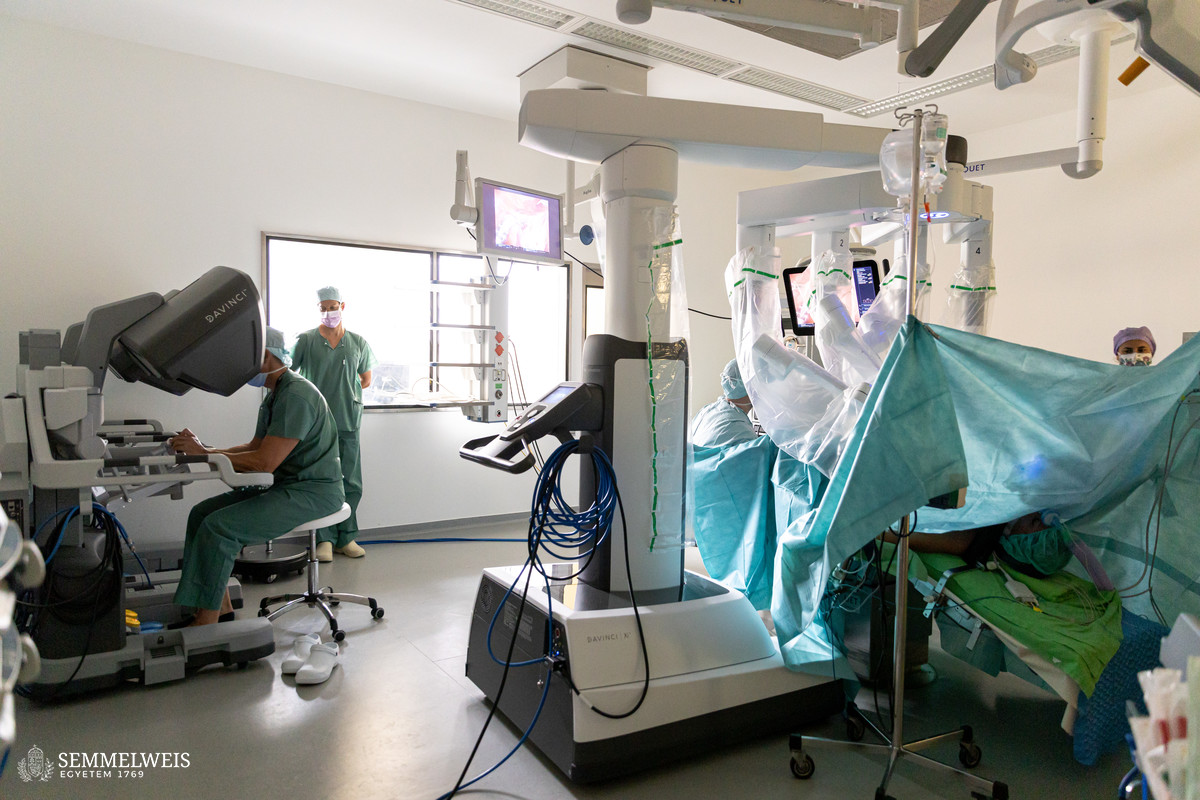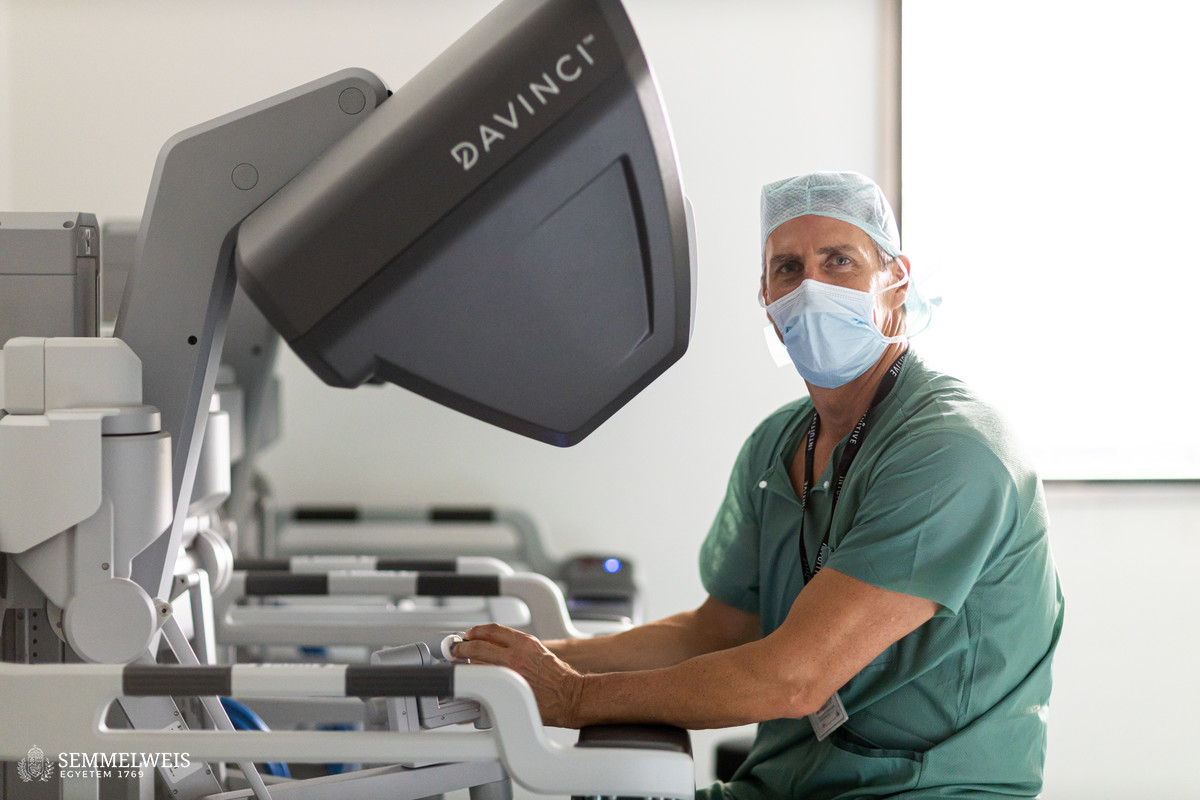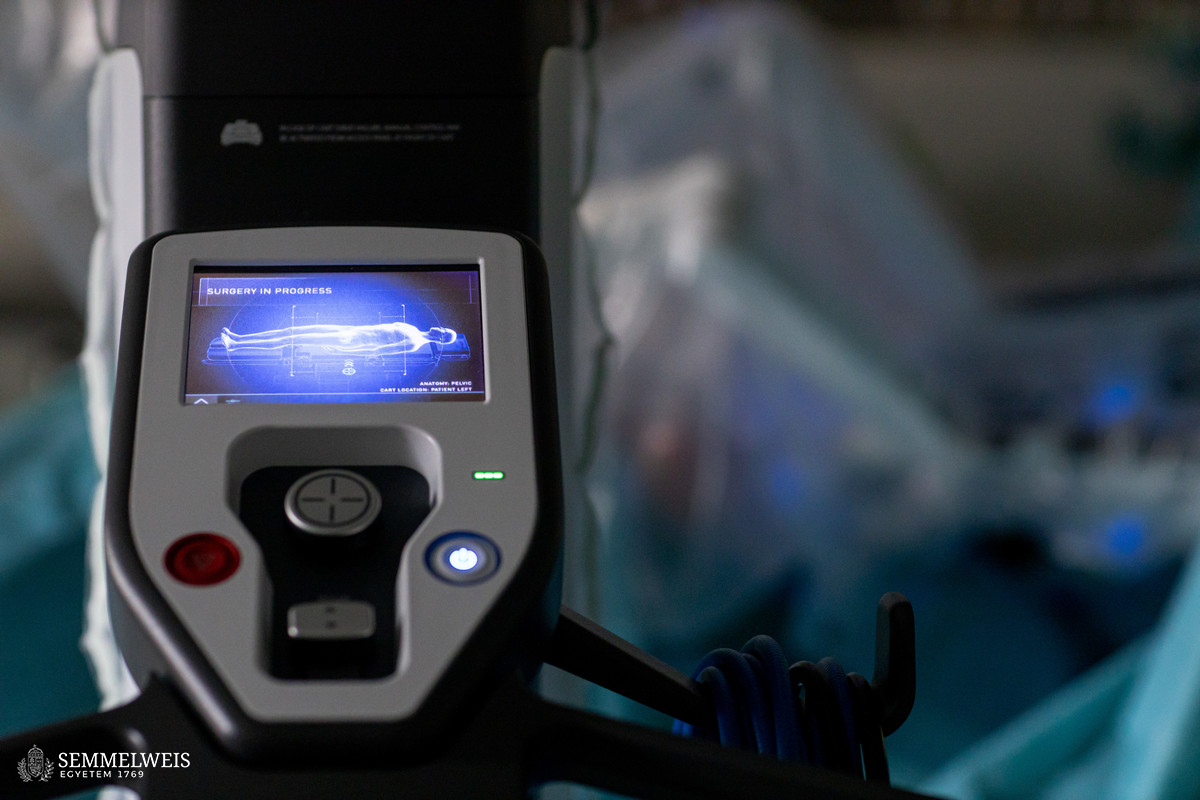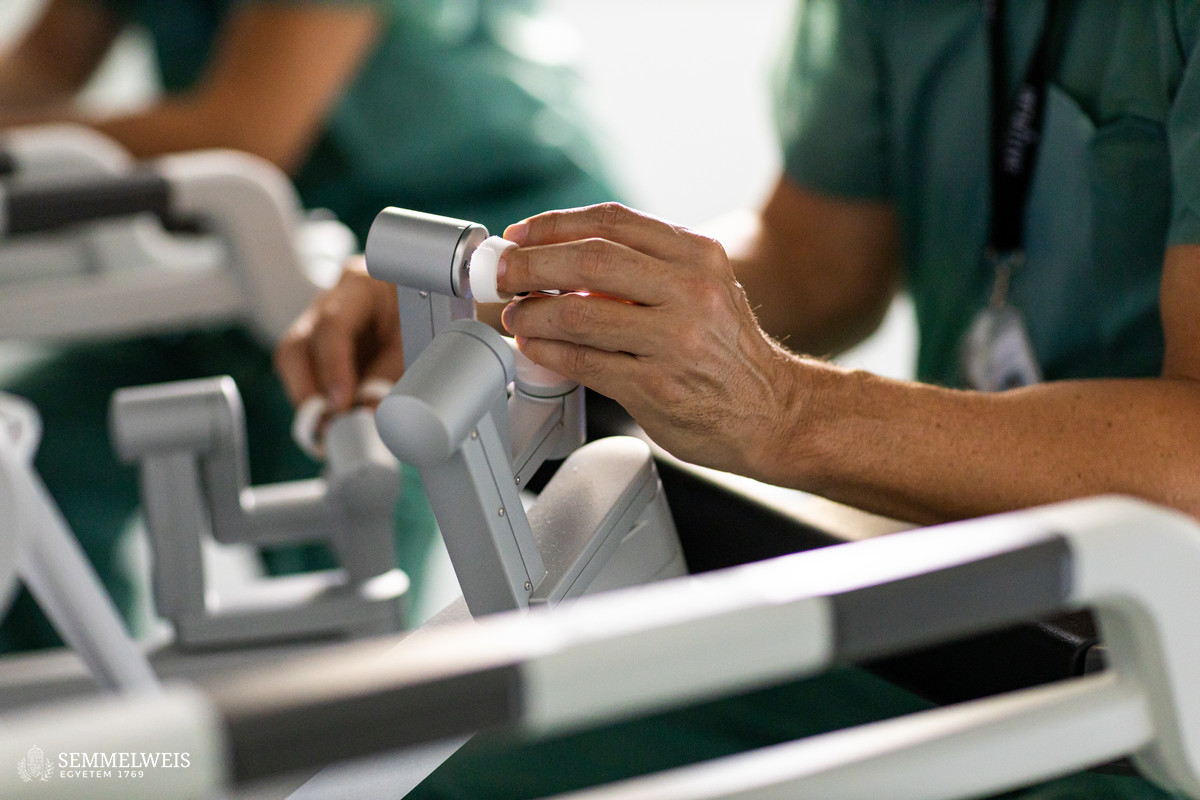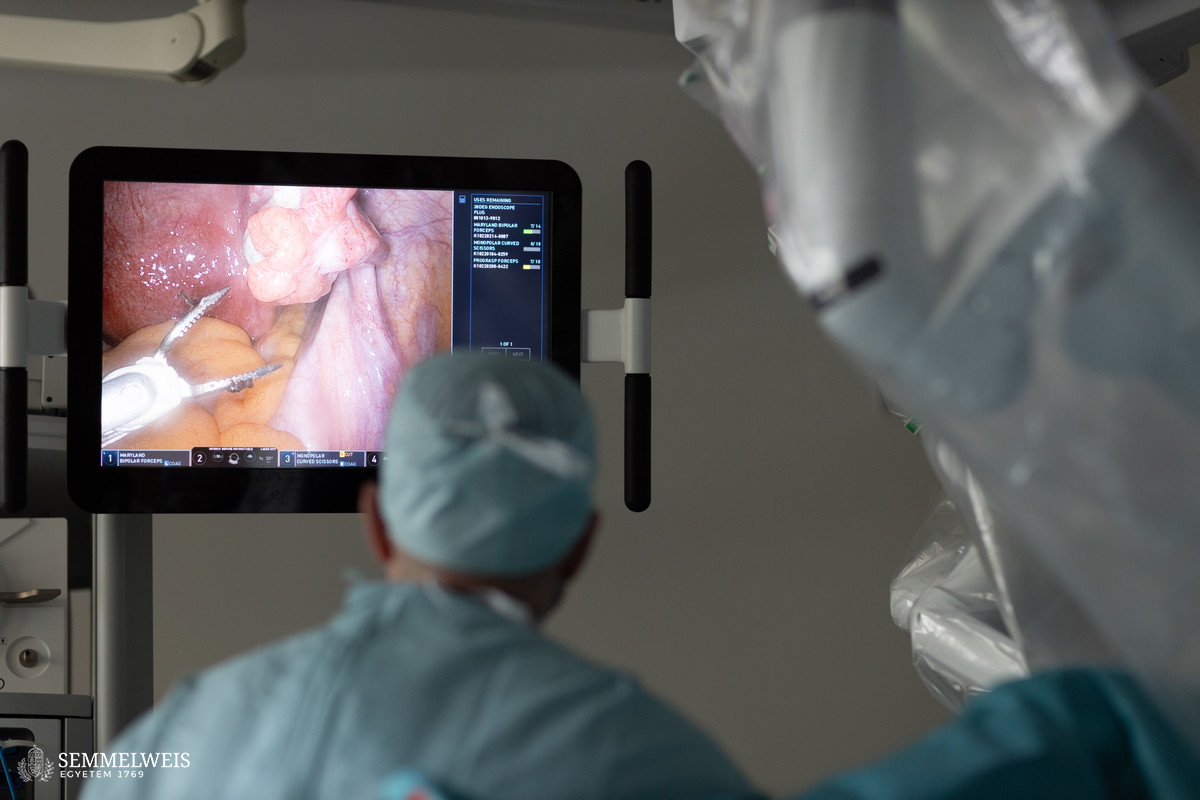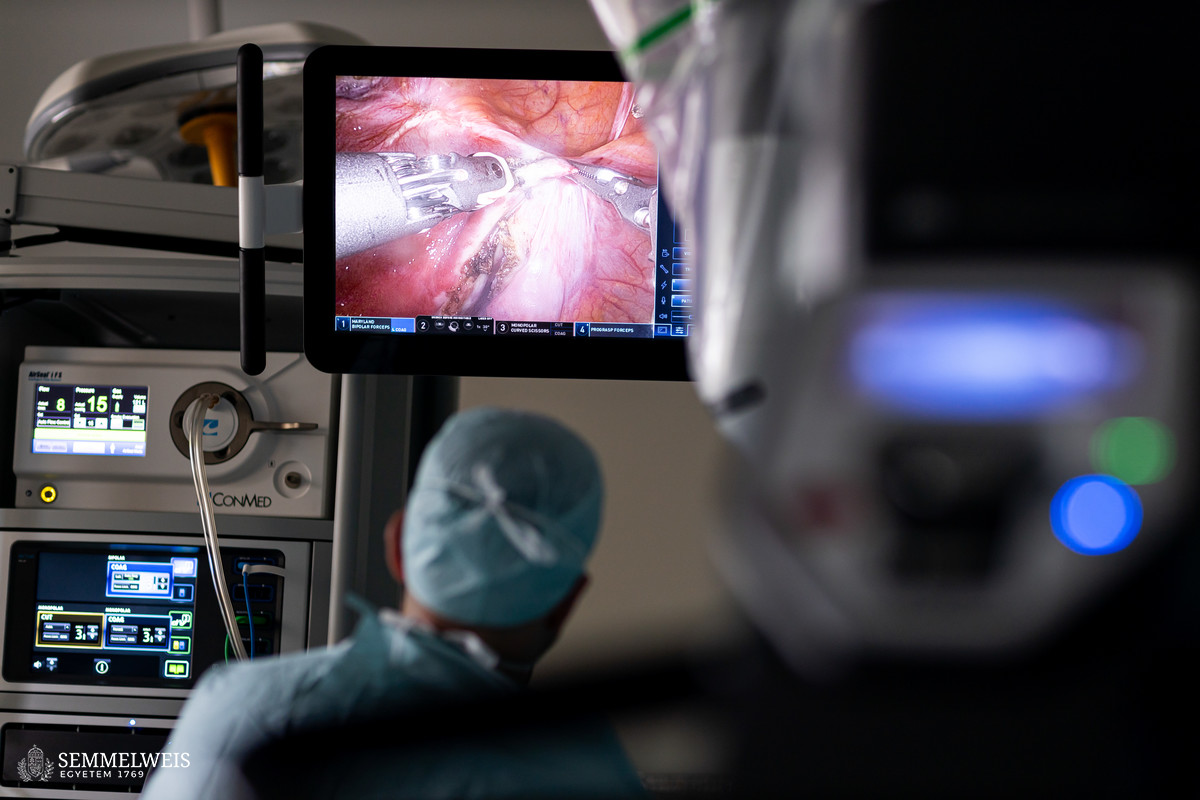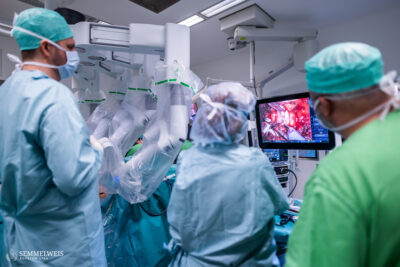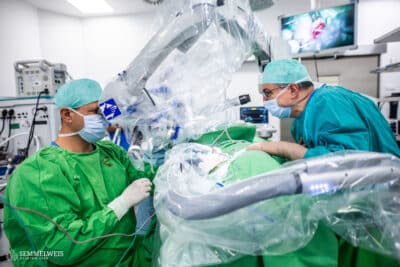Of all gynaecological malignancies, after breast cancer, tumours of the uterus are the most common, with between 1000 and 1200 new cases diagnosed each year. Recent international recommendations suggest the use of a minimally invasive surgical technique for the removal of uterine tumours.
„Laparoscopy and robotic techniques in this range involve much less strain and faster recovery time, and typically elderly, overweight patients can go home within 1-2 days after surgery,” explained Dr. Balázs Lintner, chief physician at the Department of Obstetrics and Gynaecology. The head of the tumour surgery centre added that the minimally invasive procedures also offer the possibility to perform the sentinel node technique, which reduces the surgical burden on patients. In this procedure, it is not necessary to remove all the lymph nodes to see whether the tumour has spread to them, but it is sufficient to remove a sentinel node on each side, made visible by a special dye. As a result, the histological processing of the sample is more efficient and the post-operative complication rate is lower as well. „Minimally invasive procedures can be performed using Da Vinci robotic technology on patients who, for some reason, would not be eligible for laparoscopy, and the operation can be performed more precisely even in more difficult cases.
 It also has educational benefits, as the doctor learning the procedure is able to see the same thing as the operating surgeon. And it is easier for the camera operator to sit through several hours of surgery without the need for sterile gowning,” said Dr. Balázs Lintner, noting that not all types of gynaecological tumours can be treated with minimally invasive procedures.
It also has educational benefits, as the doctor learning the procedure is able to see the same thing as the operating surgeon. And it is easier for the camera operator to sit through several hours of surgery without the need for sterile gowning,” said Dr. Balázs Lintner, noting that not all types of gynaecological tumours can be treated with minimally invasive procedures.
Of the four major cancer groups, neither ovarian cancer nor vulvar cancer are included, and the experience with cervical cancer does not point clearly towards laparoscopy either.
The tumour centre at the Department of Obstetrics and Gynaecology has been providing complex care for 4 years, without regional restrictions or referral. Patients with suspected tumours, from anywhere in the country, are sent for the appropriate tests here. The results are summarized and evaluated, the necessary operations are carried out and subsequent adjuvant treatment, chemotherapy or radiotherapy is organized. The centre provides patients with care that meets the latest international guidelines. Almost all uterine tumours are treated with a minimally invasive procedure, which used to be laparoscopic surgery, but since July, the Da Vinci robot has been used as well, albeit to a lesser extent.
„Using robotic technology, we can also operate minimally invasively on patients for whom a simpler laparoscopic surgery would not be feasible, or would be very difficult. The very high magnification, the three-dimensional image and the robot’s greater range of motion than a human hand allow movements that are not possible with a rigid laparoscope, such as those performed in open abdominal surgery.”, explained Dr. Balázs Lintner. „This means we can work much more precisely with minimal blood loss,” he added.
In addition to the technical background, the team needs specialized knowledge, training and a modern approach to provide international standards of care. The centre’s doctors have passed and are passing a specialized exam in cancer surgery, and their laparoscopic training also helps them to learn how to perform robotic surgery. The number of cases at the centre, which receives patients from all over the country, is high enough to allow us to develop good practice and that we perform procedures according to the internationally expected quality standards,” added Dr. Balázs Lintner.
The centre’s surgeons operate two days a week in two of the clinic’s four operating theatres, with plans to expand to three days a week. „This would increase the proportion of patients with uterine tumour who receive the care that is expected in the 21st century, according to international guidelines,” stressed the head of the centre.
„Those arriving with suspected tumours do not need a referral, only a registration for the outpatient day on Friday, and confirmed cases are operated on within 1 to 1.5 months of diagnosis. However, no one should come for screening, as the tumour surgery centre is not a screening station,” the cancer surgeon pointed out.
Anita Szepesi
Translation: Viktória Kiss
Photo: Attila Kovács – Semmelweis University
